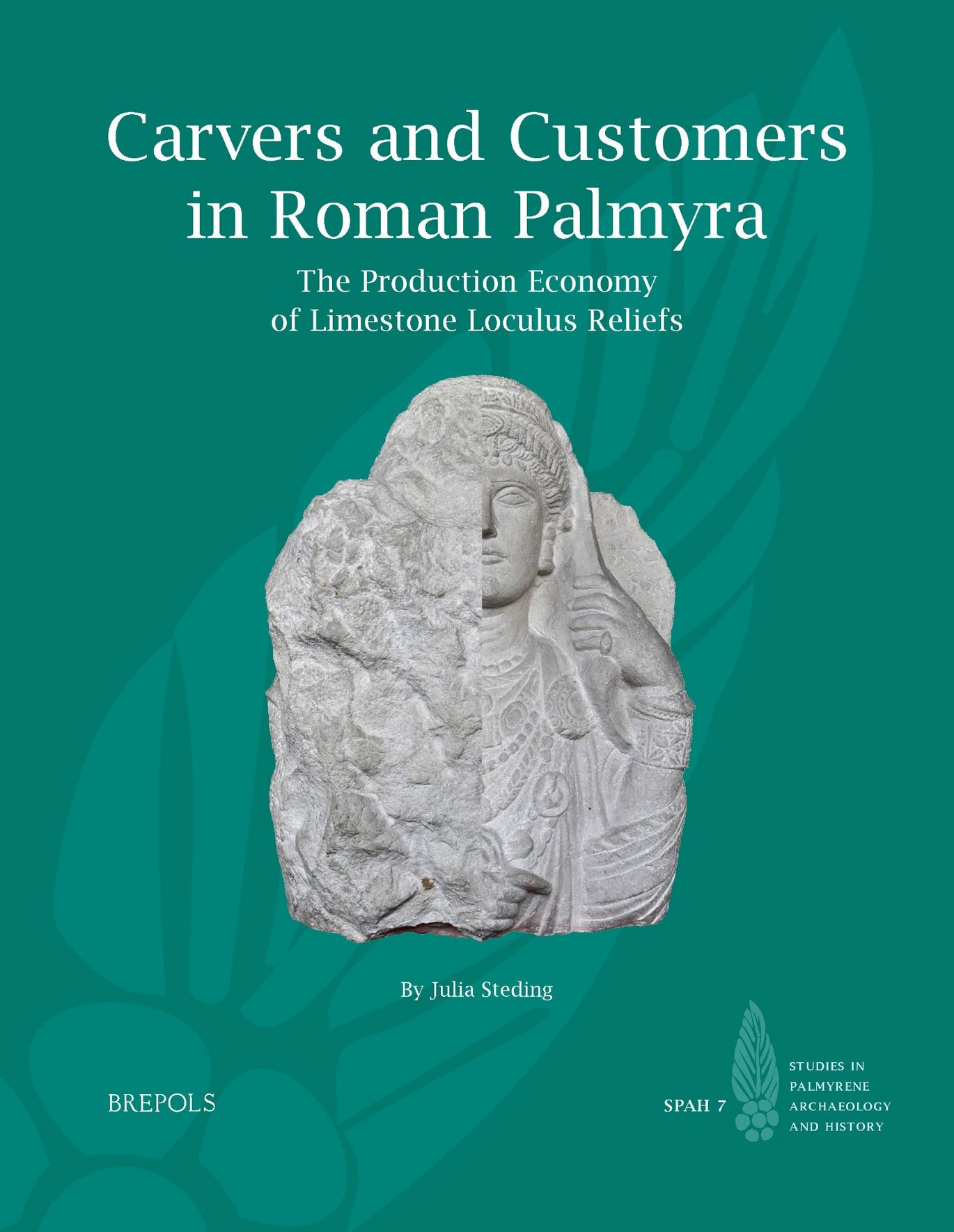Carvers and Customers in Roman Palmyra
New publication on the Palmyrene portraiture by Julia Steding.

The Palmyra Portrait Project
In the last 10 years, the members of the Palmyra Portrait Project have been collecting all known portraits from Palmyra, Syria. Based on the corpus of 4000 portraits that have been catalogued until now, it has been possible to pursue a variety of research directions. One of them is the production economy of the portraits, a topic that was quested by Julia Steding in her PhD project (2016-2019). The PhD was written within the Palmyra Portrait Project that was funded by the Carlsberg Foundation and headed by Rubina Raja at Aarhus University.
Carvers and Customers in Roman Palmyra
Carvers and Customers in Roman Palmyra: The Production Economy of Limestone Loculus Reliefs has been published by Brepols Publisher in July 2022. The book is based on Steding’s PhD thesis and analyses the production of the Palmyrene loculus reliefs, the largest group of funerary representations from the city. In different case studies, their placement in the graves, the carving techniques, and the organization of the production are explored. Through these studies is became evident what tools the Palmyrene carvers used, how this tool set changed over time, and how the relation between customers and carvers must have looked like.
In past scholarship it had been stated that the portraits look rather alike but when studied in detail, one can prove how diverse they actually are. This leads to the suggestion that each relief was carved on commission and that the customers’ influence on the relief must have been quite substantial. The research has furthermore proven how expertly the Palmyrene carvers handled the local limestone they worked with and that the portraiture can by no means be just seen as ‘provincial art’. Instead, the funerary art must be studied and seen it its own right. Moreover, we learn more about the carvers and their work, as well as the workshops and their organization. The study of the production economy helps not only our understanding of ancient limestone carving (an understudied topic in itself), but also our understanding of Palmyrene elite and stone carvers, as essential actors in the purchase and making of the portraits.
Studies in Palmyrene Archaeology and History
The book is part of the book series Studies in Palmyrene Archaeology and History, founded by Rubina Raja. Carvers and Customers in Roman Palmyra is the seventh volume in the book series that is focusing on Palmyra and the surrounding region. The series welcomes both monographs and edited collections addressing a variety of subjects connected with Palmyra, including archaeology, history, and historiographic and cultural heritage publications, as well as museum and collection studies.
Full reference
Steding, J. 2022. Carvers and Customers in Roman Palmyra: The Production Economy of Limestone Loculus Reliefs, Studies in Palmyrene Archaeology and History 7. Turnhout: Brepols.
Links
